In the past year I have come to the belated decision that for almost four decades I have been tying flies that are too big, too bright, too complicated and take too long to tie.
In part, I suppose, it was the result of narrowing objectives.
I want my flies to appeal to the feeding instinct of the fish rather than to provoke aggression.
I set out the background to this Damascene conversion in an article “JISS- a fly tying epiphany” which was recently posted on the FOSAF website.
http://www.fosaf.co.za/tippet.php
What had a profound impact on my thinking was a yellowfish study done on behalf of the Water Research Commission by the Centre for Aquatic Research in the Department of Zoology at the University of Johannesburg. It can be found on the FOSAF website.
http://www.fosaf.co.za/documents/K-677%20Bushveld%20Smallscale%20Yellowfish%20study.pdf
The scientific stomach content analysis of yellowfish caught on several rivers can be found from page 81 to 95 of the report and it shows that the diet of these omnivorous fish, in the main and in order of importance, was Baetis nymphs, detritus such as water weed and chironomids.
The importance of size
Baetis nymphs and chironomid pupae are less than a centimetre long and the experience of Alan Hobson of the Angler and Antelope in Somerset East is telling. At first, when fishing fairly turbid local rivers like the Pauls River for yellowfish, he assumed that, because of the relatively high silt loads, he would need a big, flashy fly to succeed. They proved ineffective and it was only when he started examining stomach contents that he discovered that they could see and capture small aquatic insects despite the murky water. When he used equivalent imitations, his catch rate improved dramatically.
http://www.tomsutcliffe.co.za/fly-fishing/friend-s-articles/item/201-alan-and-annabelle-hobson-a-profile.html
Last year I made what might be a quite significant discovery in fly design - when using a combination of wire and UV-light cured acrylic resins such as Loon, Deer Creek etc., the translucence of the fly can be increased and opacity reduced if gaps are left between the wire wraps on flies like the Brassie. This creates more depth in the fly because it reveals not just the wire but the hook shank beneath it and the passage of light across this stepped internal surface seems to enhance the attractiveness of the pattern.
Herman Potgieter said it seemed to attract fish over quite a distance even in fast flows of streams like the Rifle Spruit in Rhodes.
Click in images to enlarge them
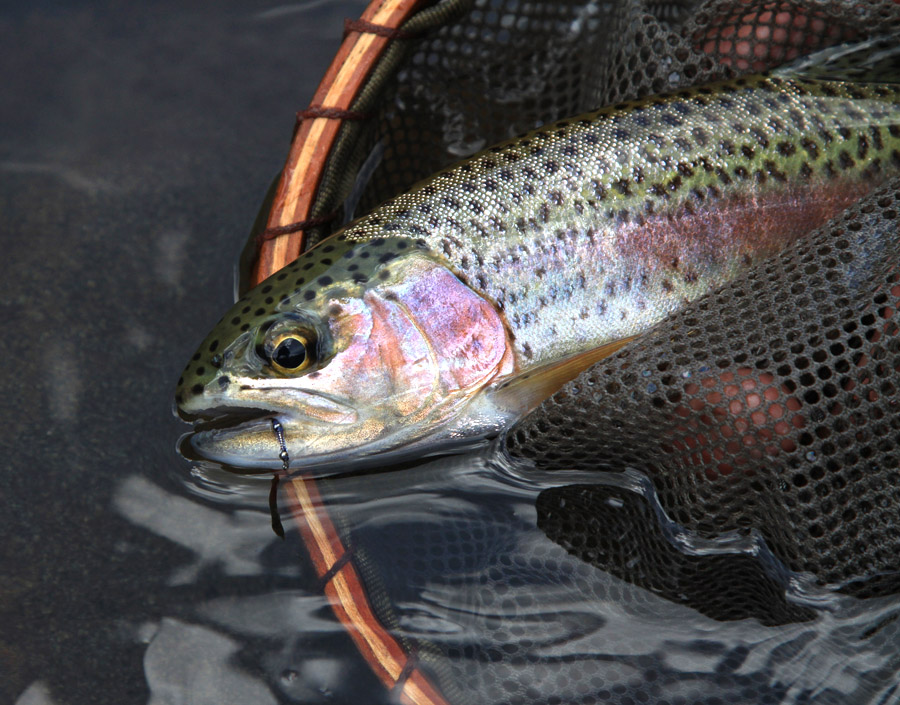
A Rifle Spruit trout caught on the Simulid Nymph – Herman Potgieter photo

The Rifle Spruit. Notice the faster rapids coming into this pool. Tom Sutcliffe photo.
It was while reading a report by Stephen Dugmore about how effective the Simulid Nymph was suspended below a dry fly that I wondered whether it could be improved as a design with specific reference to creating the ideal dropper nymph for New Zealand-style rigs where the point fly is tied to the bend of the dry fly which then acts as a strike indicator.
http://www.tomsutcliffe.co.za/fly-fishing/friend-s-articles/item/984-field-testing-new-patterns-%E2%80%93-by-stephen-dugmore.html
The importance of mass and surface area
To an increasing extent Gordon van der Spuy’s version of the Para-RAB is becoming the dry fly of choice in the Western Cape. It is sparsely dressed so the ideal New Zealand dropper needs to be as light as possible so as not to submerge such strike-indicator dry flies. At the same time it needs to be streamlined so that it sinks quickly. This is imperative because on the small streams in near Cape Town the drifts are very short, often no more than a metre.

Typical of a Cape stream drift. Photo Tom Sutcliffe
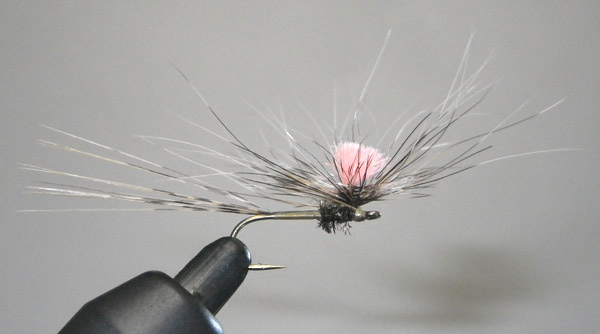
Gordon van der Spuys’ version of the Para RAB
Drifts are short on the swift, shallow streams near Cape Town so nymphs must be small and yet get to the bottom quickly
Cape Town’s most experienced guide, Tim Rolston, says the quintessential nymph for local streams is the Brassie and he ties an interesting variation. It is featured in his book Guide Flies which I reviewed on this website in March last year.
http://www.tomsutcliffe.co.za/fly-fishing/fly-tying/item/896-tim-rolston%E2%80%99s-soft-hackle-midge-by-ed-herbst.html
He uses the conventional copper wire body and peacock herl head but then singes the herl on top of the hook shank to give the fly more of a mayfly nymph profile. You can see his version in his six pack for local streams on this website.
http://www.tomsutcliffe.co.za/fly-fishing/fly-tying/item/306-tim-rolstons-favourite-stream-flies.html
Tim told me a fascinating story about this fly.
He was fishing with a friend, an experienced angler and good caster who was using a dry fly and casting to sighted trout. Every time one refused the dry Tim, who has written a book on fly casting, targeted it with his Brassie nymph and it was never refused.
http://www.inkwaziflyfishing.co.za/Learn_to_FlyCast_Information.html
I wrote about using the Brassie construction to replicate the beautifully slender Clyde and Tummel River patterns in an earlier article on this website, but now I required a somewhat different approach.
http://www.tomsutcliffe.co.za/fly-fishing/fly-tying/item/949-clyde-style-brassies-by-ed-herbst.html
My goal was to create a dropper fly which was smaller, lighter and more streamlined than the Simulid Nymph but which retained its translucency and light-transmitting qualities.
The streamlined nymph
My first attempt used a #18 jig hook and the brands available locally in this size are Grip, Dohiku, Allen, Hends and Mouche. The idea was that on shallow runs the jig hook would be less likely to hook up on the stream bed. However a #18 jig hook has the shank length of a #16 conventional hook so I decided to use another favourite hook, a #18 Orvis straight eye, big eye hook. This has the eye size of a #14 hook which makes it a lot easier to attach to your tippet.
http://reviews.orvis.com/7532/4641/reviews.htm
I replaced the dual glass beads with a single 1.5 mm brass or a 14/0 glass bead but the big difference came with the body components. The Sparse Brassie retains the Deer Creek Diamond Fine coating but instead of a single strand of wire, it uses two ultra-fine wire strands of differing colour twisted together to produce a thin, wire Krystalflash.
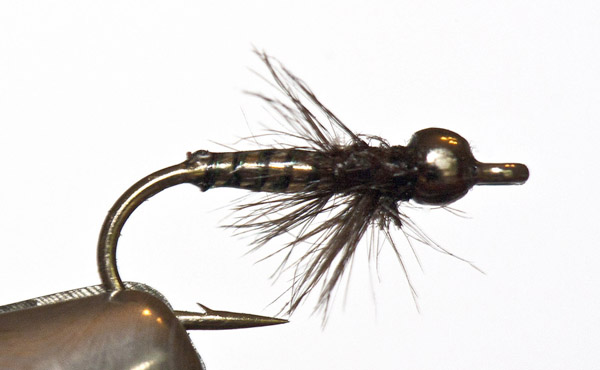
The dual-colour wire shines through the epoxy coating on the Sparse Brassie
I had previously experimented with this idea, using two strands of the same colour twisted together by clamping them in the jaws of my rotary vise and then twisting them. This was laborious process however and I did not pursue the concept any further.
When I bought the beautifully engineered and crafted dubbing brush maker made by Jay Smit of Durban, something I had long coveted, I realised that it could substantially automate this process. With Jay’s device you can combine the two strands in less than a minute.
https://www.youtube.com/watch?v=KyZLc8t5i8E
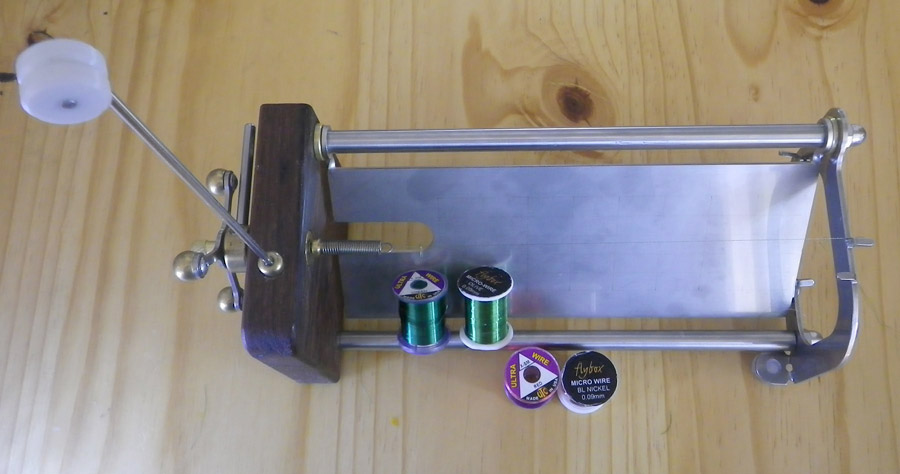
Jay Smit’s dubbing brush maker combines two colours of wire in an instant.
The thinnest wire available to me locally is Flybox Micro Wire which is sold by Morne Bayman of the African Fly Angler. Most other fly shops stock UTC Ultrawire which in X-SM is slightly thicker than the Flybox product. Regrettably the latter is not available in black because my favourite combination is black and olive so I usually combine Flybox in olive or green and UTC in black.
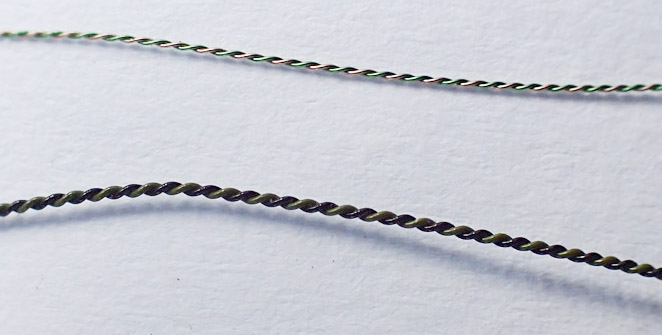
A close-up of the dual-wire strand which the author uses in the Sparse Brassie
This left the thorax and here I turned to ostrich because it has a thinner quill than peacock and creates, in effect, a fine halo of microfibres which have movement.
If a trout can spot and capture a minute ant in fast currents it is going to have no problem in spotting the Sparse Brassie which is substantially larger and so I felt the extra glint of peacock was unnecessary.
Early tests of the Sparse Brassie as a New Zealand-type dropper fly seem promising. Tom Sutcliffe felt that the glass bead version did not sink fast enough and preferred the version with the brass bead. For really strong currents you could use a 1.5 mm tungsten bead and I would choose black because I feel the fly is flashy enough already.
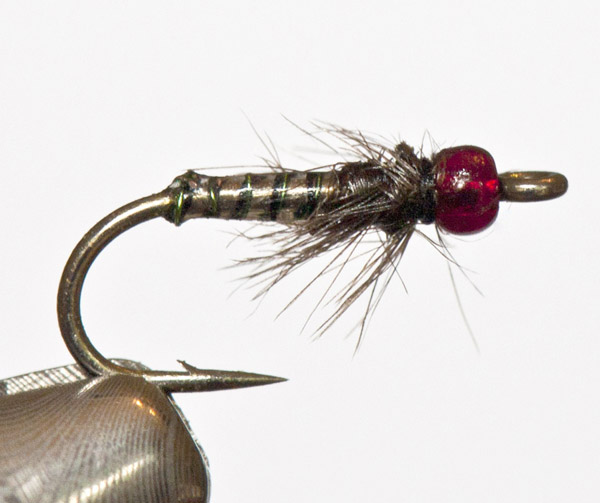
The glass bead Sparse Brassie is best suited to low-water conditions
This is just a template. You could turn it into a soft hackle by using a single turn of starling or CDC.
As I was writing this article I was visited by Herman Potgieter who was the first to test the Simulid Nymph in Rhodes.
He has added the wire Krystalflash and clear resin to a Klinkhåmer hackled with CDL and says the properties of the resin enable one to create a smooth, tapered body which will sink quickly while not being so heavy that it submerges the parachute hackle and wing of the Klink. The greater diameter of the Coq de Leon feather compensates for the extra weight of the resin-coated wire.
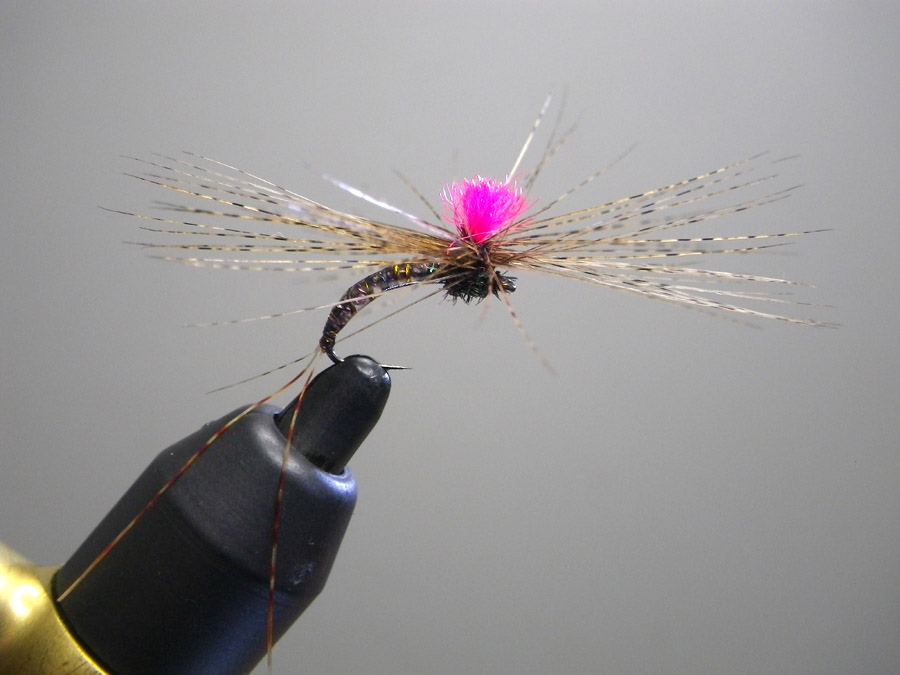
Herman Potgieter’s CDL Klink showing the translucence of the body
Incidentally, Rhodes resident and guide, Tony Kietzman, has a version of the Klinkhåmer which he calls the “Edhåmer”. It’s a standard Klink with the addition of two tails of tan Montana Fly Company ‘Tentacles” an extremely fine, translucent rubber strand which, when speckled with a permanent marker, provide both contrast and exceptional movement. I gave him some several years ago and he says they substantially increase the effectiveness of Hans van Klinken’s original pattern
http://www.tomsutcliffe.co.za/fly-fishing/friend-s-articles/item/991-fly-fishing-around-rhodes-january-2015-part-2-by-tony-kietzman.html
New tools like the JVice dubbing brush maker and new technologies like the UV-light cured acrylic resins open new frontiers constrained only by one’s inventiveness and imagination. The fish, praise be, remain the same.



